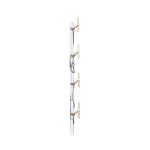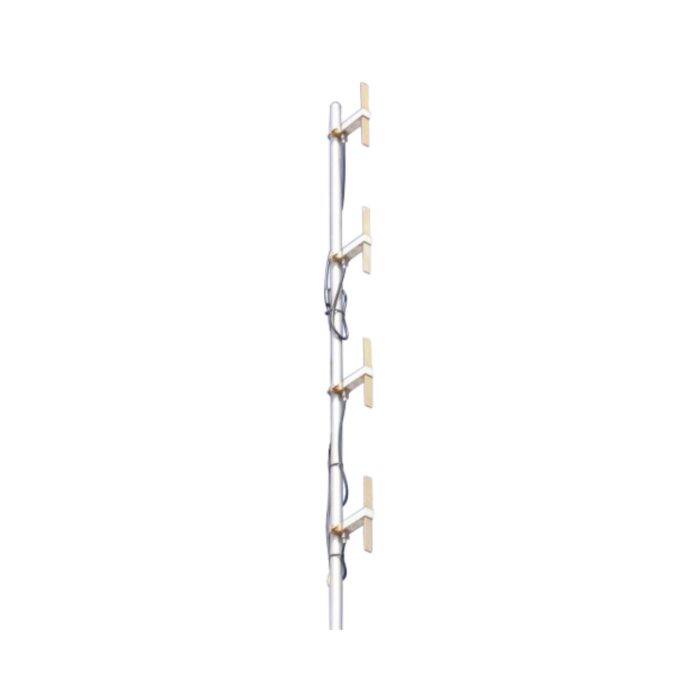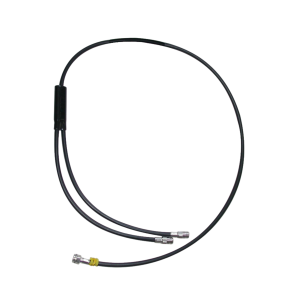Key Features:
- High-Performance UHF Range: Provides clear and reliable communication over long distances.
- Robust Construction: Built to endure harsh weather conditions and rugged environments.
- 4-Stack Design: Increases gain and improves signal reception for enhanced coverage.
- Versatile Mounting Options: Suitable for various installations, including towers and mobile units.
- Low Maintenance: Engineered for durability with minimal upkeep.
Specifications:
- Frequency: 380 – 470MHz
- Average gain: 6 dBd
- Nominal gain: 8 dBd (on support pipe)
- VSWR: ≤ 1.5: 1
- Polarisation: Vertical
- H-plane: 3 dB beam width 230˚
- E-plane: 3 dB beam width 16˚
- Rated power: 500 W
- Impedance: 50 Ω
- Termination: N-type male
- Surge protection: All metal parts are directly grounded
Mechanical Data
- Wind velocity: ≤ 200 km/h
- Wind load: @ 144 km/h 30 kg
- Flat plate area: 0.283 𝑚2
- Material: Aluminium with moulded cover
- Mounting: It has an integral V-bolt to support a pipe diameter of 25 mm to 50 mm.
- Antenna array length: 2.3 m
- Parcel dimensions: 3.3 kg / 4 off 32 cm x 25 cm x 10 cm; 1 off 32 cm x 33 cm x 6 cm








